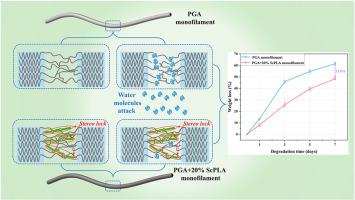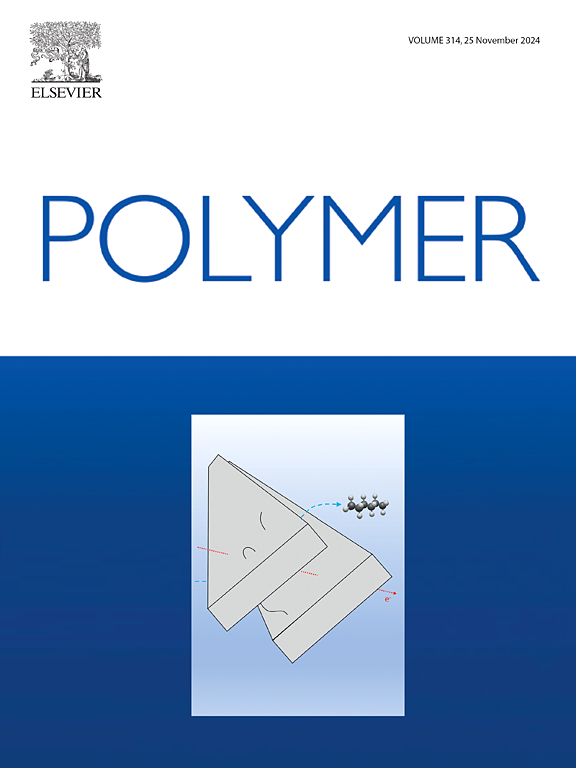Enhancing degradation resistance of polyglycolic acid through stereocomplex polylactic acid integration: A novel “stereo-lock” approach
IF 4.1
2区 化学
Q2 POLYMER SCIENCE
引用次数: 0
Abstract
The increasing concerns over pollution from non-degradable plastics are prompting a quest for sustainable alternatives. Polyglycolic acid (PGA), known for its good biocompatibility and high mechanical strength, faces limited applications due to its uncontrollable degradation rate. This article introduces an effective approach to enhance the shelf life of PGA by constructing a novel “stereo-lock” structure. Stereocomplex polylactic acid (ScPLA) is first disassembled and fixed to the amorphous region of PGA by melt spinning. Later, an annealing process enhances molecular chain mobility, leading to the reformation of ScPLA and the locking of entangled PGA amorphous molecular chains, resulting in the formation of “stereo-lock” configurations. Thus, molecular chain density in the amorphous area increases, which reduces the accessibility of water to ester bonds and is conducive to improving the degradation resistance of PGA. As a result, compared to pure PGA, the rate of degradation of the monofilament possessing “stereo-lock” structure is noticeably slower. Specifically, by the seventh day of the accelerated degradation tests, the weight loss of the PGA monofilament dropped from 61.4 % to 48.4 % in the monofilament with “stereo-lock”. Furthermore, the formation mechanism of the “stereo-lock” was confirmed through a series of investigations and analyses. The structure-property relationship between molecular chain entanglement and degradation properties of PGA was studied systematically in this study, which also offers fresh perspectives on how to control the degradation characteristics of other polymers.


求助全文
约1分钟内获得全文
求助全文
来源期刊

Polymer
化学-高分子科学
CiteScore
7.90
自引率
8.70%
发文量
959
审稿时长
32 days
期刊介绍:
Polymer is an interdisciplinary journal dedicated to publishing innovative and significant advances in Polymer Physics, Chemistry and Technology. We welcome submissions on polymer hybrids, nanocomposites, characterisation and self-assembly. Polymer also publishes work on the technological application of polymers in energy and optoelectronics.
The main scope is covered but not limited to the following core areas:
Polymer Materials
Nanocomposites and hybrid nanomaterials
Polymer blends, films, fibres, networks and porous materials
Physical Characterization
Characterisation, modelling and simulation* of molecular and materials properties in bulk, solution, and thin films
Polymer Engineering
Advanced multiscale processing methods
Polymer Synthesis, Modification and Self-assembly
Including designer polymer architectures, mechanisms and kinetics, and supramolecular polymerization
Technological Applications
Polymers for energy generation and storage
Polymer membranes for separation technology
Polymers for opto- and microelectronics.
文献相关原料
公司名称
产品信息
阿拉丁
phosphate buffer saline (PBS)
 求助内容:
求助内容: 应助结果提醒方式:
应助结果提醒方式:


